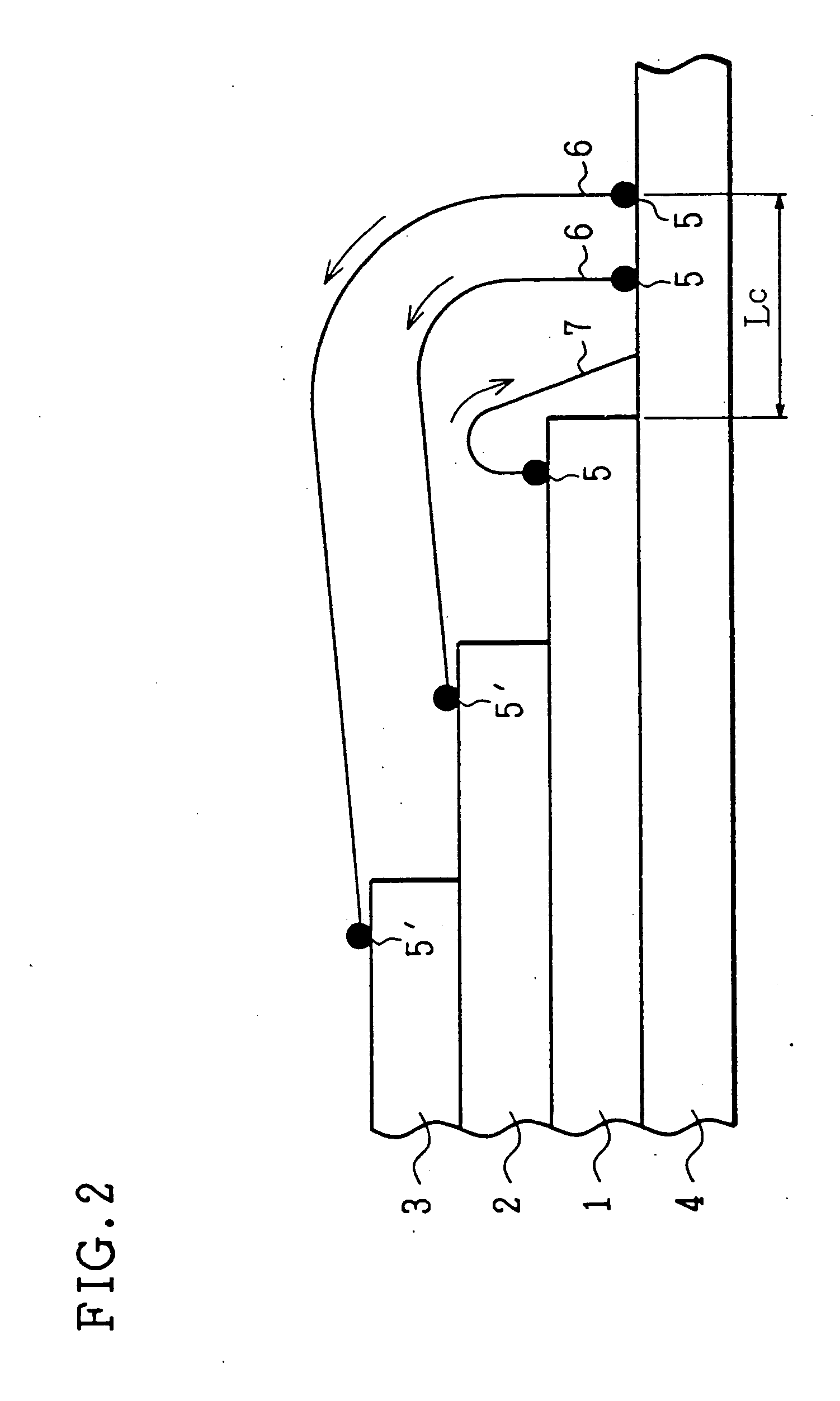Semiconductor device and manufacturing method thereof
a technology applied in the field of semiconductor chips and manufacturing methods, can solve the problems of reducing the yield of chips, weak connection, and difficulty in reducing the size of the device, and achieve the effects of reducing the restriction on combinations of semiconductor chips, reducing the package size, and reducing the restriction on the number of semiconductor chips
- Summary
- Abstract
- Description
- Claims
- Application Information
AI Technical Summary
Benefits of technology
Problems solved by technology
Method used
Image
Examples
Embodiment Construction
[0037] The following will describe one embodiment of the present invention referring to FIG. 1 through FIG. 8.
[0038] As shown in FIG. 1, a semiconductor device in accordance with the present embodiment is a multi-layered semiconductor device having a three-layered structure in which a semiconductor chip 1 as a first layer, semiconductor chip 2 as a second layer, and semiconductor chip 3 as a third layer are stacked on a substrate 4 in this order, and the bonding pads of the semiconductor layers and the substrate are connected to each other by a ball bonding method.
[0039] Specifically, the connection is made by melting the tip of gold wire 6 which has been led through a capillary (bonding capillary) to form a ball, and by press-bonding the ball with heat on each bonding pad of the semiconductor chips 1 to 3 and the substrate 4. Note that, the wire bonding is made from the bottom layer. Also, the wire is not limited to the gold wire and other wires such as a copper wire may also be ...
PUM
 Login to View More
Login to View More Abstract
Description
Claims
Application Information
 Login to View More
Login to View More - R&D
- Intellectual Property
- Life Sciences
- Materials
- Tech Scout
- Unparalleled Data Quality
- Higher Quality Content
- 60% Fewer Hallucinations
Browse by: Latest US Patents, China's latest patents, Technical Efficacy Thesaurus, Application Domain, Technology Topic, Popular Technical Reports.
© 2025 PatSnap. All rights reserved.Legal|Privacy policy|Modern Slavery Act Transparency Statement|Sitemap|About US| Contact US: help@patsnap.com



